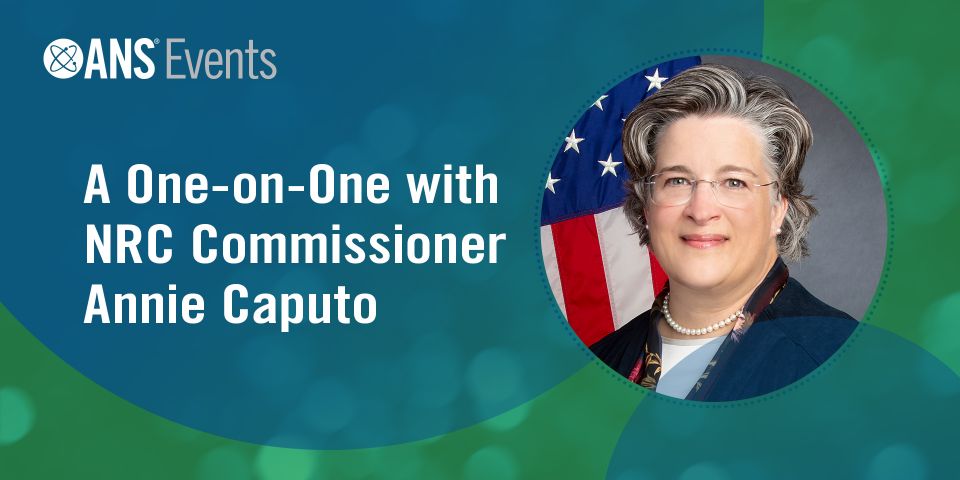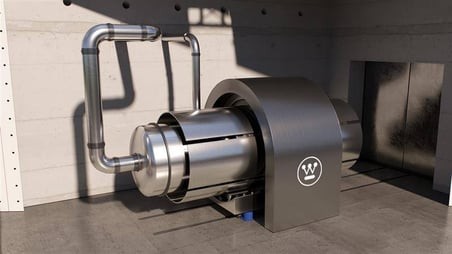Oklo’s Diané presents at Community of Practice
The American Nuclear Society’s Risk-informed, Performance-based Principles and Policy Committee (RP3C) held another Community of Practice (CoP) on April 26. For this event, the committee welcomed Mory Diané of Oklo. RP3C chair N. Prasad Kadambi led with a brief introduction before Diané shared Oklo's risk-informed, performance-based (RIPB) approach to seismic design categorization and seismic siting characterization.
Diané, a licensing manager with Oklo, is a structural engineer with a background in civil engineering
One of the hats he wears is leading the overall building system and the seismic strategy for the regulatory and the design aspects of Oklo’s Aurora Powerhouse microreactor. At the CoP, he spoke about the concepts and methodologies of seismic design categorization and site characterization. His full presentation is available to watch on the ANS Standards YouTube channel. Links to this talk and more than 40 previous CoP presentation recordings can also be found on the R3PC CoP webpage.
Site characterization and seismic design
Oklo is focused on providing clean, reliable, and affordable energy by leveraging their fast reactor and advanced fuel recycling technologies. The company plans to act as owner and operator of its plants and will sell power through power-purchase agreements or other similar structures. Its Aurora Powerhouse microreactor facility will produce 40 MWt or 15 MWe of power to align with consumer demand and allow for the rapid deployment of hundreds of reactors across the nation. Its size and power level allows for a small radionuclide inventory and a small footprint, which also leads to enhanced or inherent safety similar to nonpower and test reactors.
The design of inherently safe and simple advanced reactors warrants a reevaluation of the traditional approach to siting used for large light water reactors, which involves a site characterization that is expensive and can last several years Low-dose-consequence facilities such as the Aurora Powerhouse can benefit from an improved approach.
Oklo submitted to the Nuclear Regulatory Commission in November 2023 a white paper titled “Approach to Seismic Design Categorization and Site Characterization” (due to confidential and proprietary business information and strategy, the paper is not publicly available). The methodologies in the paper focus on 1) supporting the safe deployment of Oklo reactors to those who want and need clean heat and electricity most; 2) ensuring seismic categorization and site characterization is commensurate with the reduced risk of the facility while ensuring compliance with regulations; and 3) paving the way for a flexible approach to siting supported by low-dose-consequence facilities due to small inventory, passive safety, and robust design. Diané cited the following precedents to what Oklo is doing for the methodology presented to the NRC, which includes a streamlined approach adequate for their workers and members of the public for a low dose consequence facility:
- LLWRs nonsafety structures, systems and components (SSCs) regulated by the NRC.
- Nonpower reactors regulated by the NRC.
- Research and test reactors regulated by the NRC.
- Medical isotope facilities regulated by the NRC.
- Department of Energy nuclear facilities with designs informed by NRC regulations.
Oklo’s technology
There are over 400 years of operating experience for fast reactors worldwide. Oklo specifically uses data from the Experimental Breeder Reactor-II, which produced about 20 MWe and was operated from 1964 to 1994 by Argonne National Laboratory–West. EBR-II was a liquid metal fast reactor; accordingly, it didn’t use water as a coolant. This allowed for the coolant to operate at higher temperatures and lower pressures than current reactors, improving the efficiency and safety of the system. Fast reactors use a fast neutron spectrum meaning that neutrons can cause fission without having to be slowed down first as they are in LWRs. This allows the use of both fissile materials and spent fuel from existing reactors to produce electricity.
Further viewing
The ANS Standards Board established RP3C to support knowledge sharing of the development and application of RIPB principles and practices within the nuclear industry. This CoP is considered part of the RIPB training activity under the RP3C. Links to this and more than 40 CoP previous presentations are available on the CoP’s webpage at ANS.org for viewing. Contact standards@ans.org to inquire about being a presenter and for any questions.






